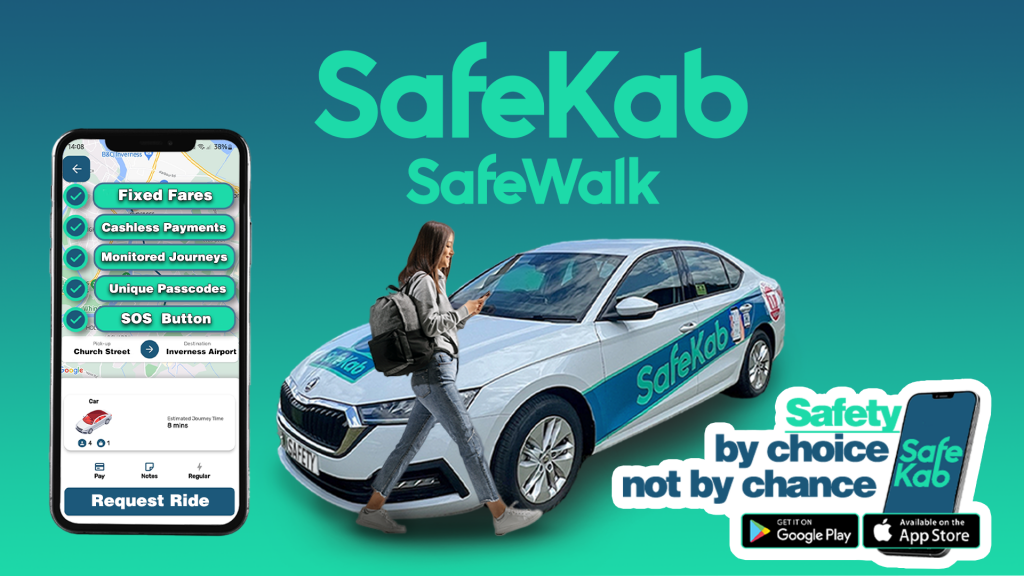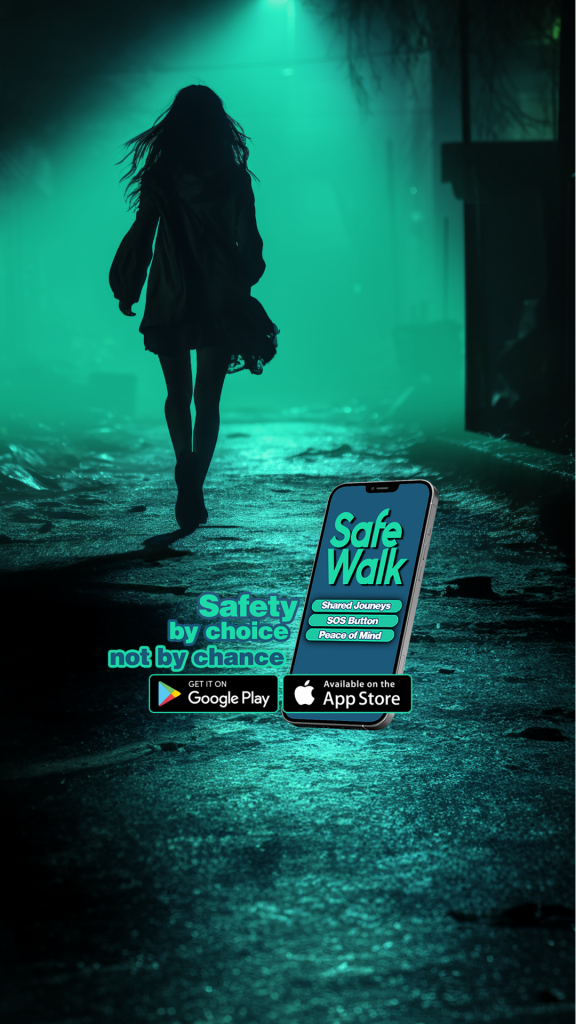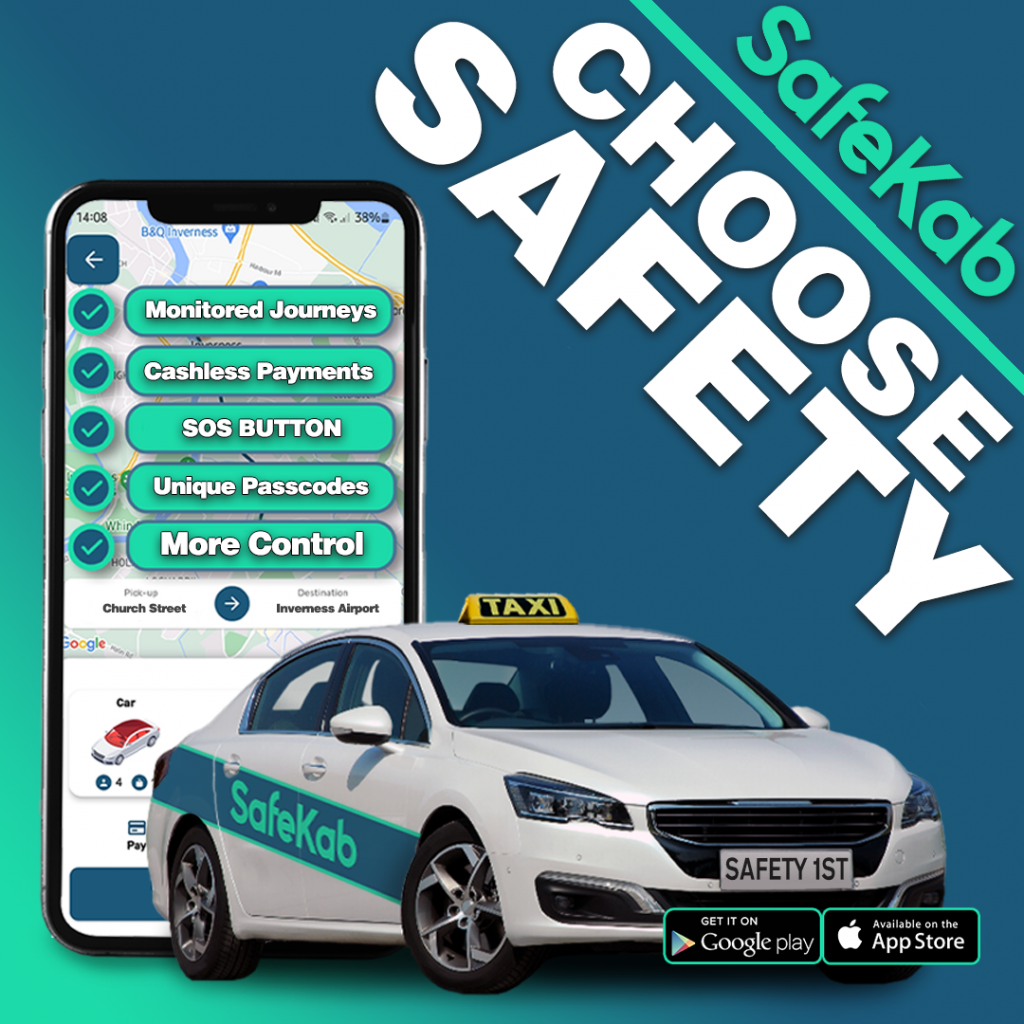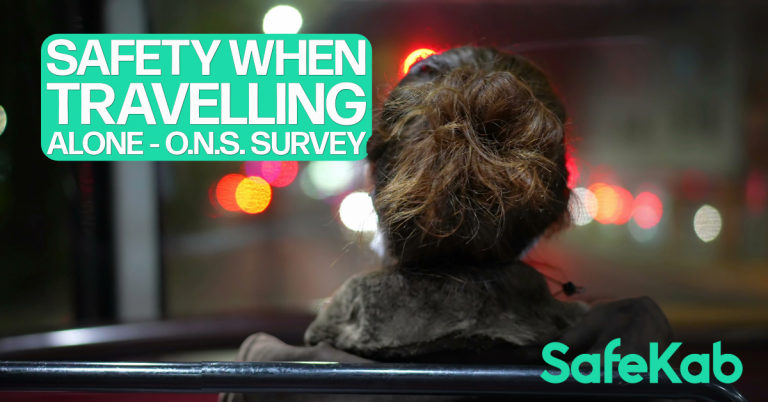In today’s society, the significance of public transport as a vital artery of urban life cannot be overstated. It serves as the backbone for daily commutes, offering an eco-friendly, efficient, and cost-effective alternative to personal vehicles. However, the core functionality of public transport systems is severely undermined by concerns over personal safety. Recent statistics shed light on a pressing issue: a significant disparity in the perception and reality of safety on public transport, particularly affecting women, young adults, and individuals with disabilities. Join us as we look at the statistics and offer a solution with SafeKab. Where safety is by choice, not by chance.

The Stark Reality of Safety Perceptions
A recent survey conducted by the Office for National Statistics (ONS) reveals a concerning trend: nearly half of the women in Britain report feeling unsafe using public transport alone after dark. This figure starkly contrasts with the sentiment among men, of whom only about one in five share this apprehension. The gap widens further among young adults, highlighting a particularly vulnerable demographic. Among those aged 16 to 34, 58% of females express feelings of insecurity, compared to 17% of males.
“Among those aged 16 to 34, 58% of females express feelings of insecurity, compared to 17% of males.“
This divergence in safety perceptions is not confined to gender alone. Disabled individuals and those of mixed or multiple ethnicities report feeling markedly less safe than their counterparts. These statistics not only spotlight the immediate need for enhanced security measures but also call for a deeper investigation into the root causes of these disparities.
Day Vs. Nocturnal Safety Concerns
The ONS findings underscore a universal truth: night-time significantly amplifies fears of public transport use. While a smaller, yet notable, fraction of the population feels unsafe during daylight, the apprehension escalates after dark. Approximately 34% of all adults harbour concerns over night-time public transport use, a sentiment that escalates to 48% among women. This heightened evening fear underscores the urgent necessity for targeted interventions that reassure all passengers of their safety, irrespective of the time of day.
Regional Safety Perceptions
Interestingly, the perception of safety varies widely across regions, with Londoners and residents of Scotland and the South West feeling comparatively safer. This regional disparity suggests that safety measures, as well as public perceptions, are influenced by localised factors, including the availability, frequency, and reliability of transport services, as well as the presence of security measures such as surveillance and patrolling.
Evolving Safety Concerns
The ONS’s longitudinal analysis reveals a dynamic landscape of safety perceptions, influenced by societal changes and possibly the global pandemic. While certain fears have intensified, others have receded, possibly reflecting a shift in public consciousness and adaptability to evolving urban challenges.
Addressing Safety on Public Transport
Immediate Actions
- Enhanced Surveillance: Implementing comprehensive surveillance systems, including CCTV cameras across all public transport networks, can deter potential offenders and provide a sense of security to passengers.
- Increased Visibility of Security Personnel: The presence of uniformed officers or security personnel on board services or at stations can provide immediate reassurance to passengers, especially during off-peak hours.
- Improved Lighting: Well-lit stations and bus stops are fundamental to preventing areas from becoming hotspots for crime and harassment.
- Emergency Communication Systems: Accessible, user-friendly emergency communication devices or apps can empower passengers to report incidents or concerns in real-time.
Long-Term Strategies
- Community Engagement: Engaging with communities to understand their specific concerns can help tailor interventions and foster a culture of safety and respect.
- Education and Awareness: Campaigns to educate the public on safety protocols, bystander intervention techniques, and respect for fellow passengers can cultivate a safer environment.
- Policy and Legislation: Advocating for stronger laws and policies to protect passengers, especially vulnerable groups, can ensure that offenders face significant consequences.

Stay Safe with SafeKab
These safety concerns are the reason that we developed SafeKab – to make travel safer and increase your personal safety. Our taxis work on that platform that not only gives you more choice in your taxi travel. But also layers of safety protecting you and your driver on your journey.
Top 9 Reasons To Travel with SafeKab
- Inverness Taxis Partnership
SafeKab has partnered with Inverness Taxis, a well-respected local taxi company. Together, they provide a reliable, safe, and iconic taxi service throughout Inverness and the Highlands. - Empowered Travel
The app empowers passengers to choose their preferred car and driver. The app offers complete transparency, ensuring you are in control of your journey. - Safety Features
SafeKab offers innovative safety features, including a star rating system for both passengers and drivers, ensuring accountability and comfort. - Safety Code
Before starting your journey, you’ll get a unique code to match your driver’s code, enhancing safety and confidence. - Journey Monitoring
Stay connected with loved ones during your travels. Share your journey information and location in real-time, providing peace of mind to your friends and family. - Panic Button
In case of emergencies, the app has a panic button that notifies both the local office and designated contacts, ensuring your safety during the journey. - Fixed Fares
When you order a taxi, you’ll receive offers from drivers for fares to your destination. Once you accept this offer, the price is locked in. No more staring at taxi meters – just transparent prices. - Cashless Travel
Top up your in-app SafeKab wallet, and never have to take out your purse or wallet to pay. This way, you can always make sure you have money for the taxi home, and you don’t need to carry any cash! - SafeWalk
SafeKab’s ‘SafeWalk‘ feature allows you to stay safe and connected even when walking home alone. Share your route with a contact, and they can track your journey in real-time.
SafeKab is a fantastic tool for teens, students, schools, families, lone women, and anyone who might feel vulnerable while travelling alone or wants to feel more secure on their journeys in and out of a taxi. Download the app now and choose safety!



